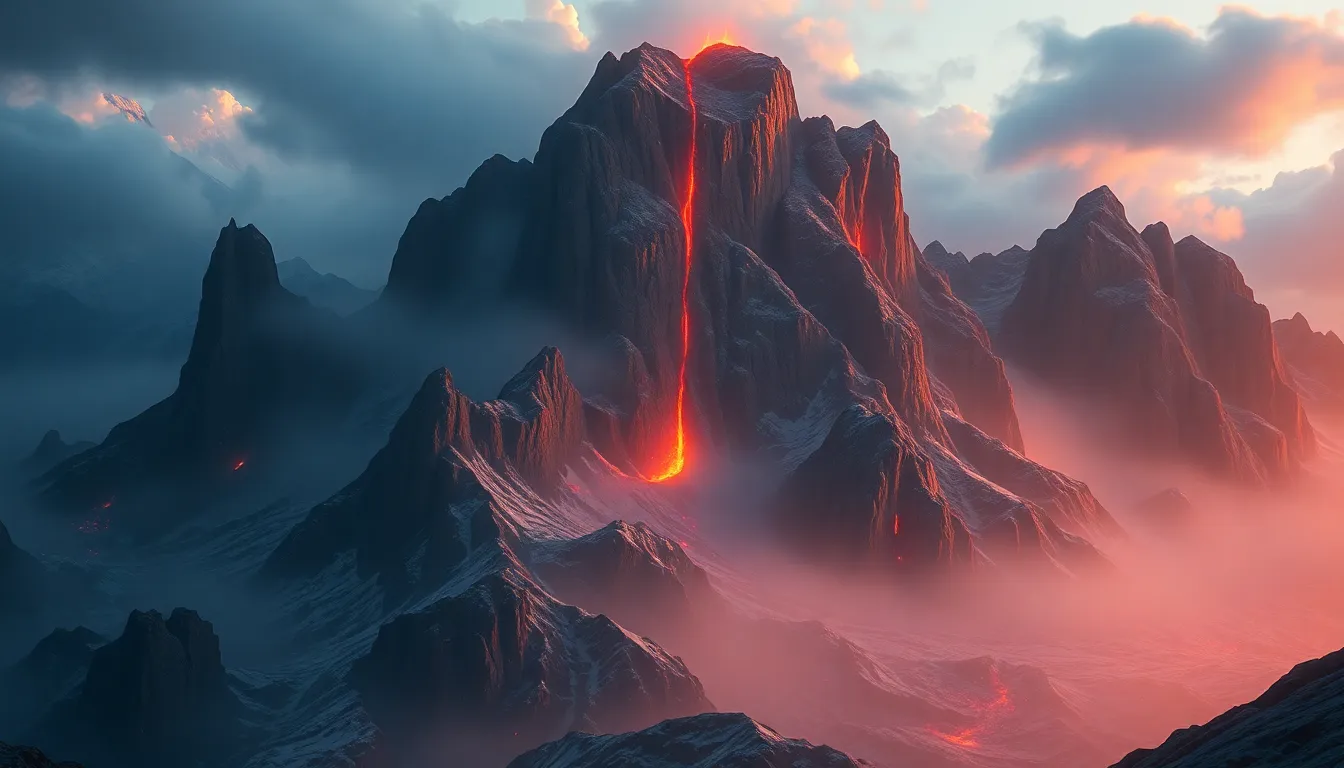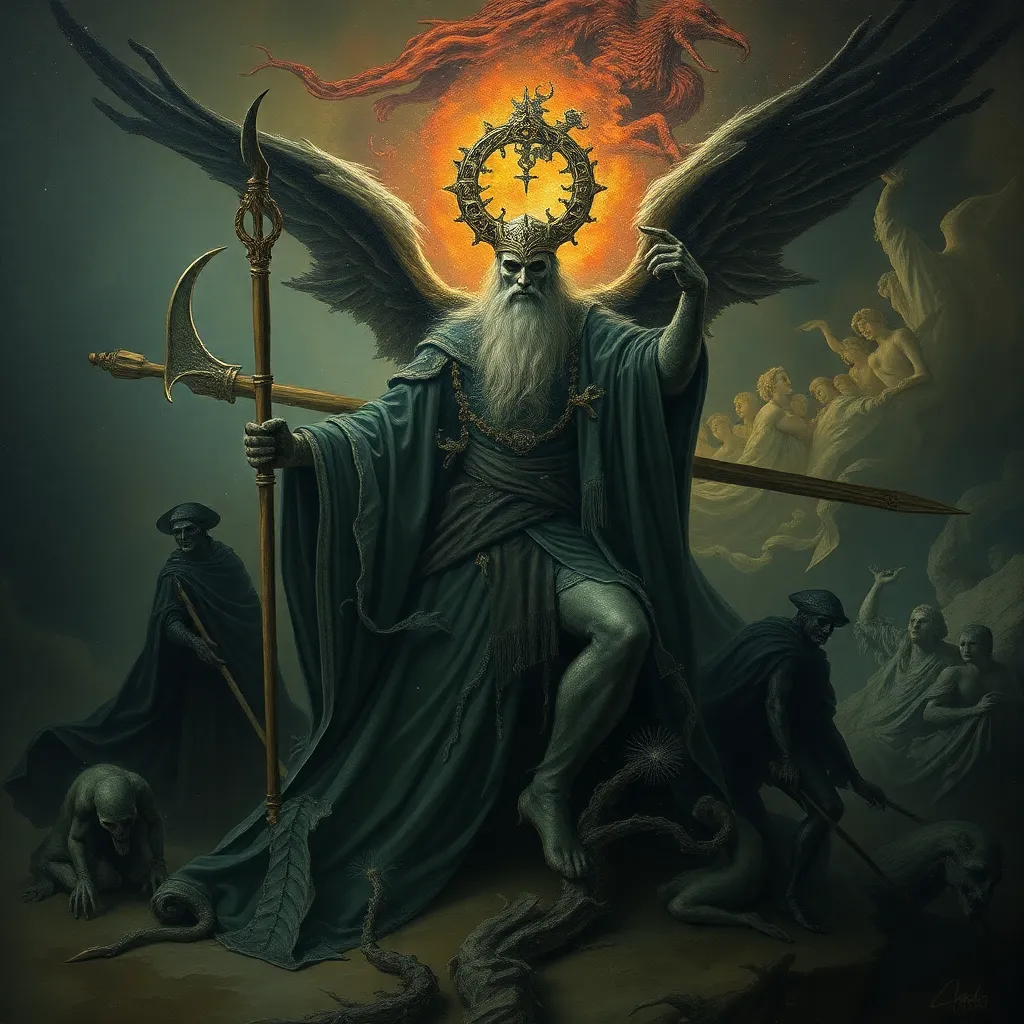The Mountain of the Eternal Flame: Myths of Everlasting Light
I. Introduction
The Mountain of the Eternal Flame stands as a beacon of wonder and intrigue, captivating the imaginations of those who hear its stories. Nestled in the heart of nature, this mountain is not just a geological formation; it embodies a rich tapestry of myths and legends that speak to the human experience. The importance of myths in cultural storytelling cannot be overstated, as they serve as vessels for conveying values, explaining natural phenomena, and connecting communities across generations.
This article aims to explore the myths surrounding everlasting light, illuminating the rich history, symbolism, and cultural significance of the Mountain of the Eternal Flame.
II. Historical Significance of the Mountain
The Mountain of the Eternal Flame is located in Azerbaijan, specifically in the Gobustan region. This area is characterized by its rugged terrain, dotted with unique rock formations and ancient petroglyphs that date back thousands of years. The mountain features a natural gas fire that has been burning for centuries, creating a mesmerizing display that has drawn people from all corners of the globe.
Ancient civilizations, including the Zoroastrians, revered this mountain as a sacred site. They believed it was a gateway to the divine, a place where the eternal flame connected the earth to the heavens. Archaeological findings in the area, including altars and artifacts, suggest that the mountain has been a site of worship and pilgrimage for millennia.
III. The Origin of the Myths
The myths surrounding the Mountain of the Eternal Flame can be traced back to early tales and folklore. These stories often reflect the awe that ancient peoples felt towards the natural phenomena they encountered. The eternal flame, a result of natural gas seeping through the earth, has been interpreted as a divine sign or a manifestation of the gods.
Natural phenomena, such as the flickering flame and the mountain’s imposing presence, contributed significantly to the creation of these myths. Oral traditions played a crucial role in preserving these legends, as stories were passed down through generations, each retelling adding layers of meaning and interpretation.
IV. Symbolism of Light in Various Cultures
Light has always held a profound significance in various cultures, often symbolizing hope, guidance, and enlightenment. In many traditions, light represents the triumph of good over evil and the pursuit of knowledge. The Mountain of the Eternal Flame fits into this larger narrative, serving as a symbol of eternal hope and resilience.
A comparative analysis of light symbolism reveals that:
- In Christianity, light signifies the presence of God and divine truth.
- In Buddhism, light represents enlightenment and the dispelling of ignorance.
- In Zoroastrianism, fire is sacred, embodying purity and the divine essence.
Within this context, the Mountain of the Eternal Flame resonates with universal themes of light and its profound impact on human culture and spirituality.
V. Key Myths Associated with the Mountain
A. The Legend of the Eternal Flame
The legend of the Eternal Flame is deeply rooted in the cultural fabric of the region. According to the story, a young shepherd discovered the flame while tending to his flock. Mesmerized by its beauty, he believed it to be a gift from the gods, a sign of their presence on earth. This tale has evolved over time, with various interpretations emerging across cultures.
Cultural interpretations of this legend often emphasize themes of discovery, reverence for nature, and the connection between humanity and the divine. The flame is seen as a reminder of the sacredness of life and the importance of maintaining harmony with the natural world.
B. Myths of Guardians and Protectors
Alongside the legends of the Eternal Flame, various myths speak of guardians and protectors associated with the mountain. These figures are often depicted as wise beings who safeguard the flame and impart valuable lessons to those who seek their wisdom.
Some notable characters include:
- The Flame Keeper: A mystical figure said to tend to the eternal flame, ensuring it never extinguishes.
- The Guardian Spirit: A protective entity believed to guide pilgrims and warn them of dangers.
The lessons imparted by these figures often revolve around respect for nature, the importance of balance, and the quest for inner enlightenment.
VI. The Mountain in Modern Literature and Arts
The Mountain of the Eternal Flame has continued to inspire contemporary writers, artists, and performers. In modern literature, the mountain often symbolizes hope and the quest for truth. Authors use its imagery to evoke a sense of wonder and to explore deeper philosophical themes.
Artistic interpretations, including paintings, sculptures, and performances, reflect the mountain’s enduring allure:
- Many artists depict the flame as a central motif, representing the spark of creativity and inspiration.
- Performances often incorporate the mountain’s stories, bringing ancient myths to life through dance and theater.
This influence on modern storytelling and popular culture underscores the mountain’s place in the collective consciousness.
VII. Scientific Exploration of the Mountain
While myths abound, scientific exploration has provided explanations for the eternal flame. Natural gas deposits beneath the mountain create a continuous supply of fuel for the flames, leading to its perpetual existence. Geologists have studied the unique geological features of the area, revealing insights into its formation and the environmental impact of these natural phenomena.
This intersection of science and mythology highlights the complexity of human understanding. While scientific explanations may demystify certain aspects, they do not diminish the cultural significance of the myths associated with the mountain.
VIII. Pilgrimages and Tourism
The Mountain of the Eternal Flame remains a site of spiritual significance for many. Pilgrimages to the mountain are common, with visitors seeking to connect with its energy and partake in rituals that honor its legacy. These modern-day pilgrimages often include:
- Lighting candles at the base of the mountain.
- Conducting ceremonies to pay homage to the eternal flame.
The economic impact of tourism related to the mountain is substantial, providing opportunities for local communities and promoting cultural exchange.
IX. Myths Versus Reality: The Ongoing Debate
Despite the rich tapestry of myths, skepticism surrounds the authenticity of these stories. Some argue that myths serve to embellish history, while others contend they are essential to cultural identity. The role of myth in shaping cultural narratives cannot be underestimated; they provide a sense of belonging and continuity.
Even as scientific explanations emerge, myths endure, offering comfort and connection to past generations. This ongoing debate illustrates the dynamic relationship between myth and reality, demonstrating how stories adapt and evolve while retaining their core significance.
X. Conclusion
The Mountain of the Eternal Flame represents a unique convergence of nature, mythology, and human experience. Its enduring allure captivates those who seek to understand the mysteries of light and existence. Through the exploration of its myths, we gain insight into the values, beliefs, and aspirations of cultures throughout history. The Mountain of the Eternal Flame stands not only as a natural wonder but as a testament to the power of storytelling and the human spirit’s quest for meaning.
https://www.youtube.com/watch?v=EKvlkXYmBWI


